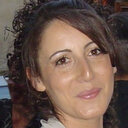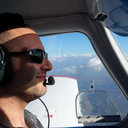In vitro cytotoxic activity of extracts and isolated constituents of Salvia leriifolia Benth. against a panel of human cancer cell lines.
Nøgleord
Abstrakt
In the course of recent efforts to identify new potential antiproliferative active principles, Salvia leriifolia extracts and isolated constituents were evaluated for their cytotoxic activity against a panel of human cancer cell lines, including renal adenocarcinoma (ACHN), amelanotic melanoma (C32), colorectal adenocarcinoma (Caco-2), lung large cell carcinoma (COR-L23), malignant melanoma (A375), lung carcinoma (A549), and hepatocellular carcinoma (Huh-7D12) cells. The hexane and CH(2) Cl(2) extracts showed the strongest cytotoxic activity against the C32 cell line with IC(50) values of 11.2 and 13.6 μg/ml, respectively, and the AcOEt extract was the most active extract against the COR-L23 cell line (IC(50) of 20.9 μg/ml). Buchariol, a sesquiterpene obtained by biofractionation of the CH(2) Cl(2) extract, exhibited a higher activity than the positive control vinblastine against the C32 and A549 cell lines (IC(50) values of 2.1 and 12.6 μM, resp.). Interesting results were also obtained for naringenin, a flavonoid isolated from the AcOEt extract, which exhibited a strong cytotoxic activity against the C32, LNCaP, and COR-L23 cell lines (IC(50) values of 2.2, 7.7, and 33.4 μM, resp.), compared to vinblastine (IC(50) values of 3.3, 32.2, 50.0 μM, resp.). None of the tested compounds affected the proliferation of skin fibroblasts (142BR), suggesting a selective activity against tumor cells.



